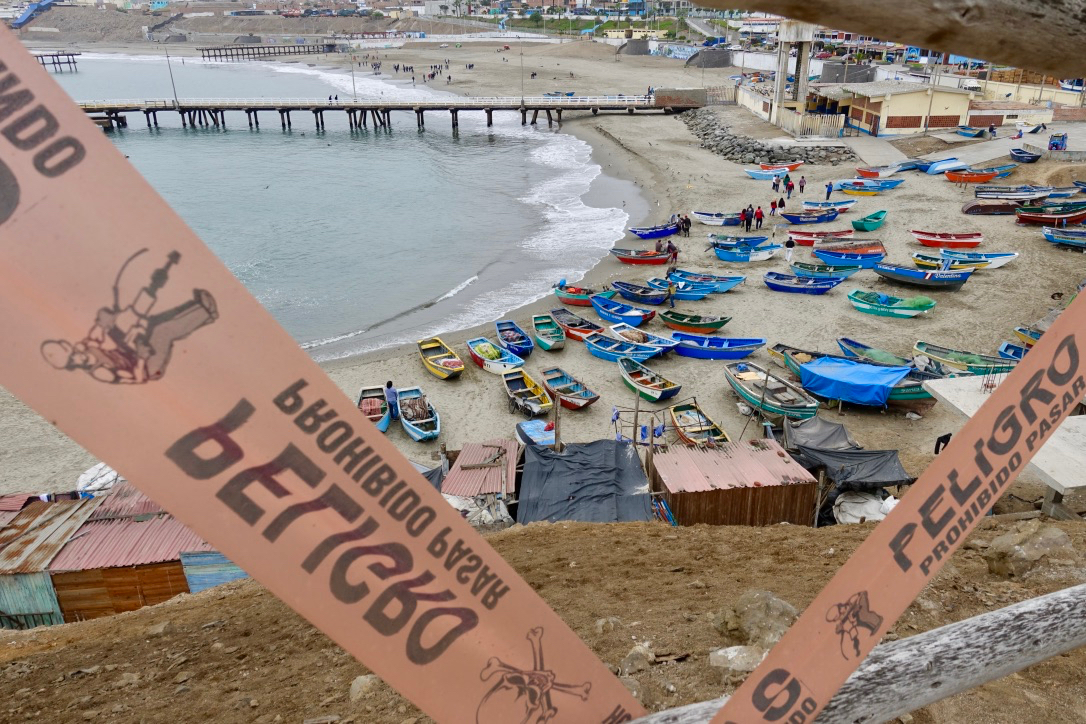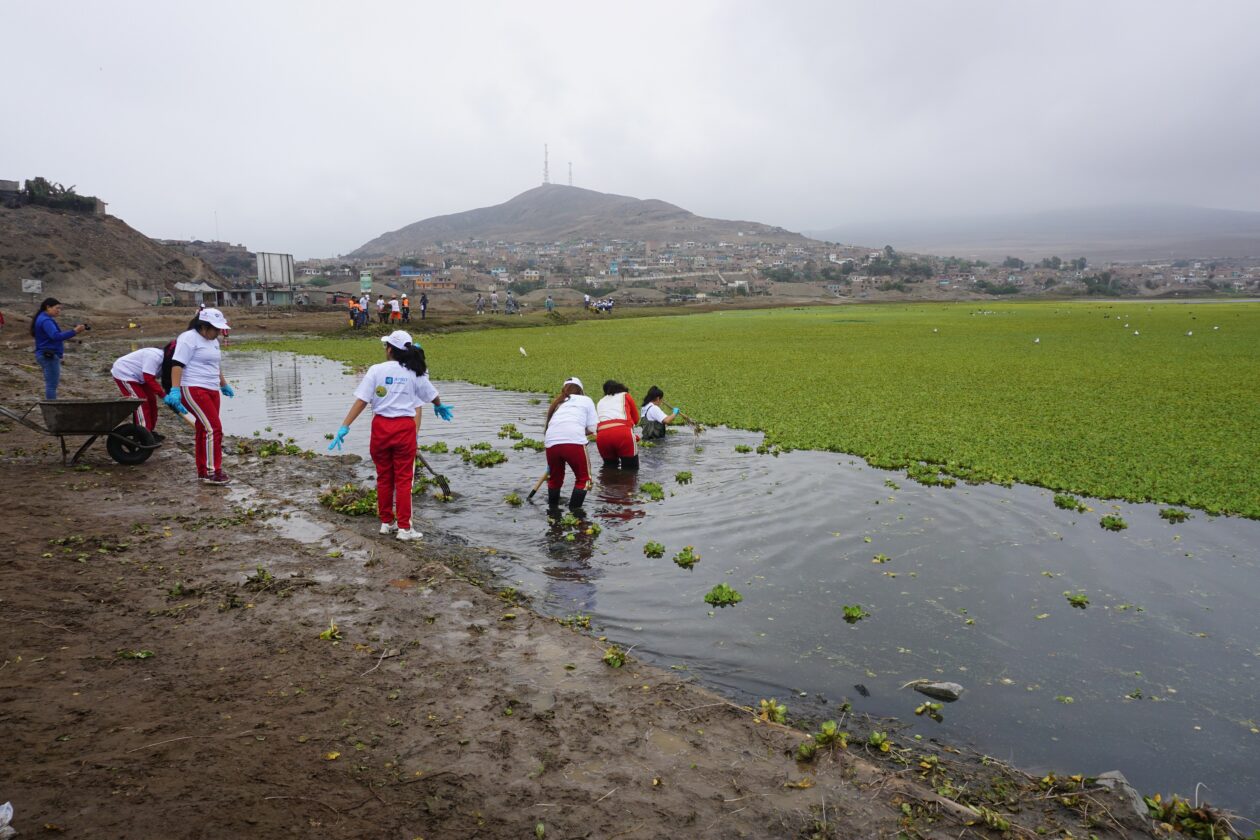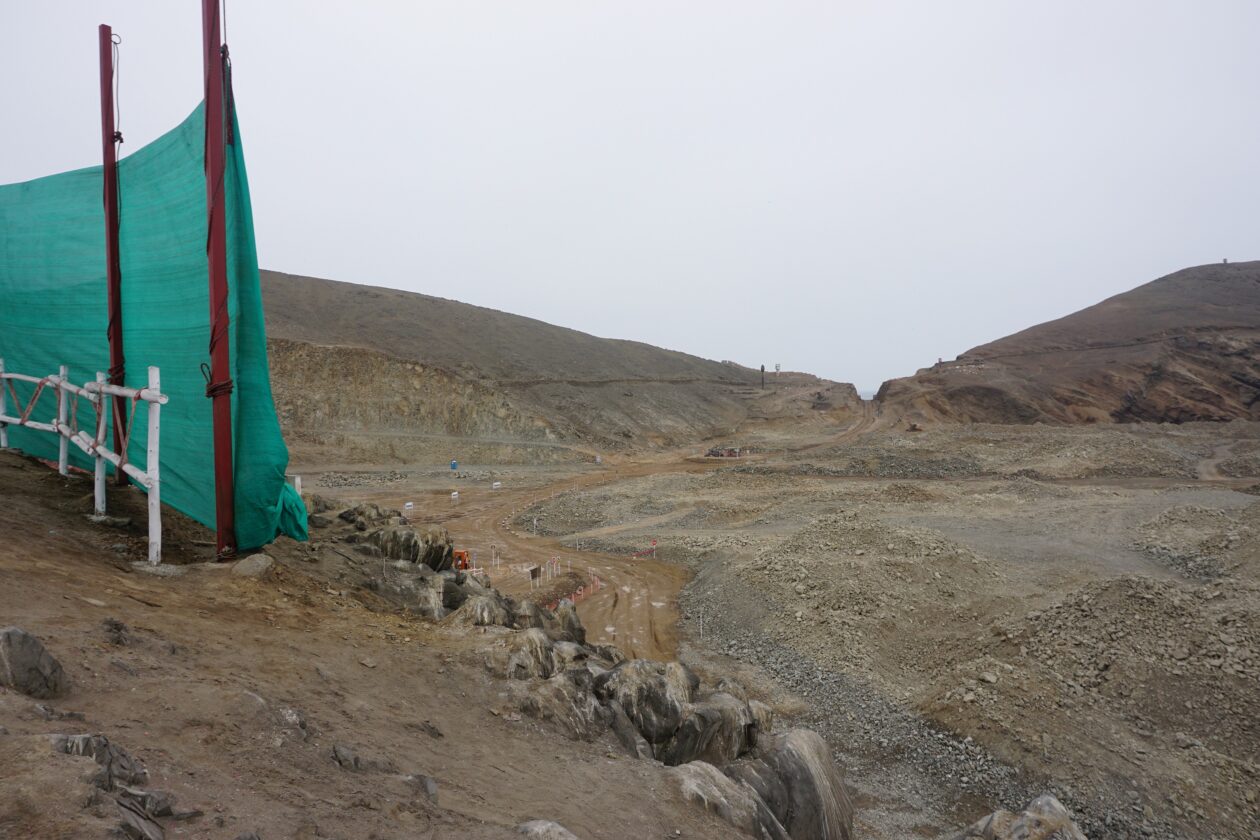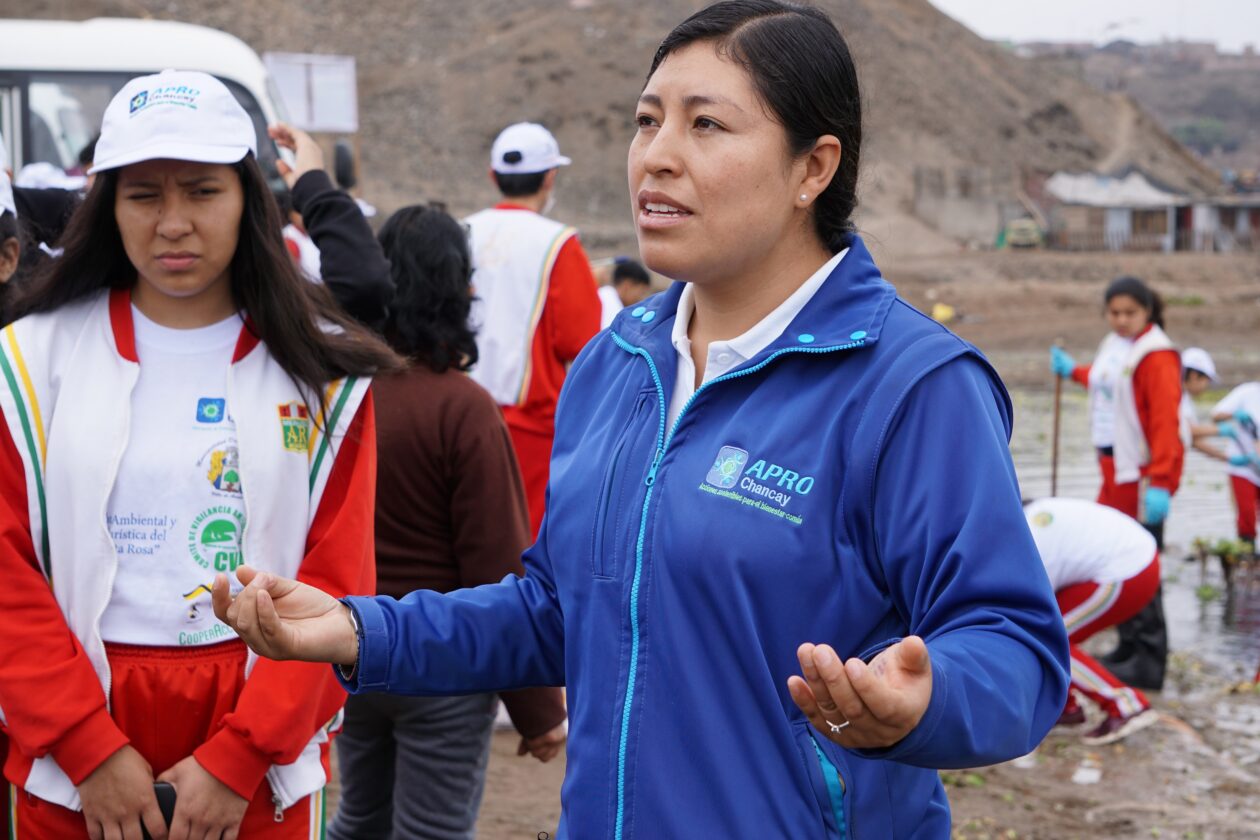By Julia Woods, Communications Specialist

Under the billowing gray clouds a few hours outside of Lima, Peru sits a coastal community called Chancay. Formerly a pre-Colombian architectural civilization, Chancay has transformed into a modernized port town as a result of sweeping urbanization from Lima.
The Santa Rosa wetland, located along the coast of Chancay, is a powerful example of the locals’ dedication to community. Thousands of volunteers, including many young people, factory workers, and scientists, steward this ecosystem with great care.

The landscape of this vibrant green bio-corridor brings vitality to the otherwise grey, industrial landscape of Lima city sprawl. Home to myriad plant and bird species, the Santa Rosa wetland is a reprieve where locals and tourists alike can connect with nature. And the benefits of the wetland are far-reaching: the wetland plays an important role in carbon sequestration, rendering it an effective natural method to slow climate change.
But a large concrete wall looms atop a mountain adjacent to the wetland, where an excavation site encroaches closer and closer onto the wetland ecosystem. The future of Santa Rosa Wetlands and the community of Chancay hangs in balance due to threats such as megaport development, mining, and agriculture.
Volcán Compañía Minera, a mining company, and Cosco, a Chinese industrial port and shipping corporation, signed an agreement in 2019 for megaport development on the coast of Chancay. The mining process has unearthed massive containers of sand that are then placed around the community. The companies plan to drain and destroy the Santa Rosa wetland to store the waste that comes as a by-product of mining.

To make way for the mine, the companies have paid off local fisherfolk to move out of the area. The companies have also resorted to more violent tactics to push locals away, including planting explosives outside of people’s homes, permanently damaging them.
Over the years, locals watched as the mining company has slowly consumed the community. Their once natural coastline is now covered with shipping containers and extractive equipment, and children who play in the sand risk ingesting toxic materials.
Because of the lack of government oversight in the area, Volcán and Cosco may just be able to get away with all of this destruction with no consequence.
That’s why our grantees, Comité de Vigilancia Ambiental Humedal Santa Rosa, are mobilizing Chancay citizens to monitor the wetlands. Since 2017, the group has used two $5,000 grants to host capacity building workshops, run public awareness campaigns in schools and the community, and develop proposals to protect the wetland to share with local authorities. The group is also organizing six monitoring and cleanup trips in the wetland, and creating an informational video and radio program to communicate the importance of conserving the wetland.

Earlier this month, civil society groups found 50 omissions and inconsistencies in the latest Environmental Impact Assessment of the Chancay Port. Among the major risks omitted from the assessment include the destruction of beaches and cliffs, the expulsion of cancerous particulate matter, and a mass mortality of bird and marine species. It is clear that the fight to protect the Santa Rosa Wetland isn’t over, and we stand in solidarity with the community.
We are proud to support local people in Chancay – and across the globe – as they resist extractive industries and strive to protect the local environment they hold dear for future generations.
Want more stories like these? Sign up for our newsletter.
